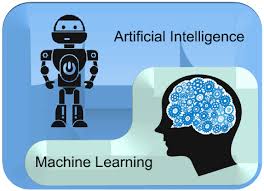info@gladsme.in
+91.8891968718
Artificial Intelligence & Machine Learning: Shaping the Future of Technology
Artificial Intelligence & Machine Learning: Shaping the Future of Technology

In the rapidly evolving landscape of technology, Artificial Intelligence (AI) and Machine Learning (ML) are at the forefront, transforming industries and redefining the way we interact with the world. These technologies are not just buzzwords but represent a seismic shift in how data is utilized, analyzed, and implemented to solve complex problems. In this blog, we will explore the fundamentals of AI and ML, their applications, and the potential they hold for the future.
What is Artificial Intelligence?
Artificial Intelligence is the branch of computer science that aims to create systems capable of performing tasks that would typically require human intelligence. These tasks include learning, reasoning, problem-solving, perception, and language understanding. AI can be broadly categorized into two types:
Narrow AI: Systems designed to handle a specific task, such as facial recognition or internet searches.
General AI: Hypothetical systems that possess the ability to perform any intellectual task that a human can.
What is Machine Learning?
Machine Learning, a subset of AI, involves the development of algorithms that allow computers to learn and make decisions from data. Instead of being explicitly programmed, ML systems use statistical techniques to identify patterns and make predictions. Key types of Machine Learning include:
Supervised Learning: The algorithm is trained on labeled data.
Unsupervised Learning: The algorithm identifies patterns in unlabeled data.
Reinforcement Learning: The algorithm learns by interacting with its environment and receiving rewards for good decisions.
Applications of AI and ML
The applications of AI and ML are vast and varied, impacting numerous sectors:
Healthcare: From predictive analytics for patient care to robotic surgeries, AI is revolutionizing healthcare.
Finance: AI-driven algorithms are used for fraud detection, risk management, and automated trading.
Retail: Personalized recommendations and inventory management are enhanced through ML algorithms.
Transportation: Autonomous vehicles and traffic management systems are made possible by AI.
Entertainment: Content recommendation systems, such as those used by Netflix and Spotify, rely heavily on ML.
The Future of AI and ML
The future of AI and ML holds immense potential:
Advancements in Natural Language Processing (NLP): Improved language models will lead to better human-computer interactions.
Ethical AI: As AI systems become more integrated into society, ensuring ethical use and mitigating bias will be crucial.
AI in Education: Personalized learning experiences and AI-driven educational tools will transform traditional education.
Sustainability: AI can play a significant role in addressing climate change by optimizing energy use and improving resource management.
Challenges and Considerations
While the potential benefits of AI and ML are significant, several challenges must be addressed:
Data Privacy: Protecting user data and ensuring privacy is a major concern.
Bias and Fairness: Ensuring AI systems are free from bias and are fair in their decision-making processes.
Job Displacement: The rise of AI and automation could lead to job displacement, necessitating strategies for workforce transition.
Artificial Intelligence and Machine Learning are not just shaping the future—they are here, transforming our present. As we continue to advance in these fields, it is essential to consider the ethical, social, and practical implications to harness their full potential responsibly. By understanding and embracing AI and ML, we can unlock new opportunities and create a future that benefits everyone.
Related Blogs

The Importance of Data Structures in Software Development
Read More...
Exploring Machine Learning Algorithms: A Beginner's Guide
Read More...
The Evolution of Programming Languages: From Assembly to Rust
Read More...
Understanding Big O Notation: A Guide for Developers
Read More...Subscribe for our Newsletter
Subscribe to elevate your software game! Stay updated on the latest trends, coding insights, and exclusive promotions with our newsletter.
